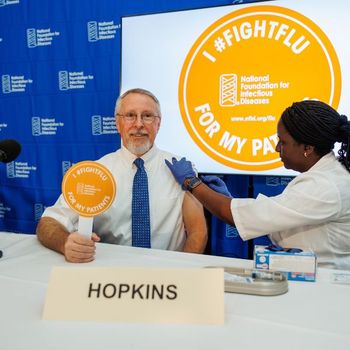
Tracking Drug-Resistant Tuberculosis in Real Time
Professor Frances Jamieson at the University of Torontos Department of Laboratory Medicine and Pathobiology (LMP), and a medical microbiologist with Public Health Ontario, is leading the way in tracking potentially deadly outbreaks of tuberculosis (TB) with a powerful new Geographic Information System (GIS) application, known as Ontario Universal Typing Tuberculosis (OUT-TB) Web.
Not just applicable to TB, this secure web-based system could be used to monitor a host of pathogens and diseases from E. coli O157:H7 to meningitis to SARS-like outbreaks across the country. We can identify and track existing and emerging strains of TB and this powerful technology can be applied to any type of infectious disease, says Jamieson. Eighty-five percent of our TB cases in Ontario are foreign-born, so this system will allow us to have a global impact.
This sophisticated system combines patient data and demographics with the genotype or fingerprint of each TB strain. It provides health authorities with a unique real-time geographical view of tuberculosis cases and clusters and allows them to track potential outbreaks. More specifically, it can track whether cases are linked genotypically, geographically and epidemiologically, and whether a case involves drug-resistant strain(s).
Working at the Public Health Ontario laboratory, the largest TB laboratory in North America, Jamieson recognized the need for such a system. We really are leading the way with OUT-TB. We can combine pre-existing patient information such as location and other demographics with our laboratory results. We tell the public health units what strain type of TB they have, what drug treatment is appropriate and we track whether the strain is drug-resistant.
TB is a global problem and it ranks as the second leading cause of death from an infectious agent worldwide. The World Health Organization reports that in 2011, 8.7 million people fell ill with the disease and 1.4 million people died. While overall rates have been declining, health authorities are concerned about the threat of multidrug-resistant tuberculosis (MDR-TB), which is resistant to two of the most effective first-line drugs. Even more concerning is the threat of extensively drug-resistant tuberculosis (XDR-TB), which is resistant to these first-line drugs, at least one of the injectable second-line drugs and a fluoroquinolone.
OUT-TB allows us to understand the specifics of a single case and how it relates to other cases in the community, the province and the global movement of individuals, says Jamieson. OUT-TB will be available to local public health units as they work with Public Health Ontario to monitor, detect and manage TB in the province.
Source: University of Toronto
Newsletter
Stay prepared and protected with Infection Control Today's newsletter, delivering essential updates, best practices, and expert insights for infection preventionists.






